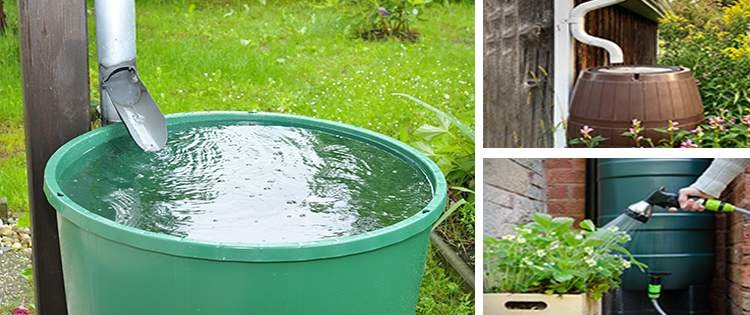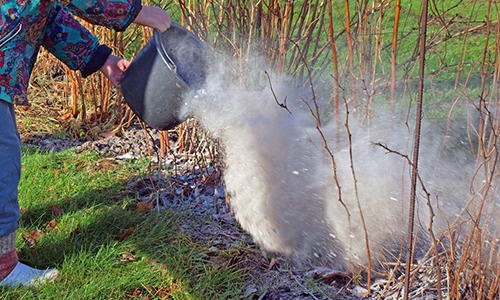Do you want to grow your own corn in your backyard? If yes, then you’ve come to the right place! Growing corn is not as difficult as it looks, and with the right tips and tricks, you can easily have a crop of fresh corn ready for harvest. In this guide, we’ll show you how to plant and care for your own corn plants so that you can enjoy a delicious home-grown meal.
A Brief History
Corn is one of the oldest and most important crops in the world, with a history that stretches back thousands of years. It is believed to have originated in Central America, where it was cultivated by indigenous peoples for centuries. From there, it spread throughout the Americas, eventually becoming an important crop in many parts of the world.
The earliest archaeological evidence of corn dates back to around 5500 BCE in Mexico, where it was a staple crop of the ancient Aztecs and Mayans. Around 1000 CE, corn had spread across much of the continent and was being grown in North America as well. By the time Europeans arrived in the New World in 1492, corn was a major food source for Native Americans.
Since then, corn has become an integral part of global agriculture – it is now grown on almost every continent and is a major source of food for millions of people around the world. In addition to being used as a food source, corn is also used to make ethanol and other biofuels, animal feed, and industrial products such as plastics and adhesives.
Nutritional Benefits
The nutritional benefits of sweet corn are numerous. It is high in dietary fiber, minerals, and vitamins, as well as being a great source of antioxidants. Sweet corn is also a good source of folate, which is important for pregnant women and those looking to increase their intake of this essential vitamin.
Sweet corn contains ferulic acid, an antioxidant compound that has been linked to cancer prevention. It is also a good source of carotenoids and flavonoids, which have anti-inflammatory properties. Sweet corn is also one of the few vegetables that contains lutein and zeaxanthin, two compounds that are important for eye health and vision.
Additionally, sweet corn has a medium glycemic index rating. This means it won’t cause spikes in blood sugar levels like some other carbohydrate sources. This makes it a great choice for people who are watching their sugar intake or trying to manage diabetes.
When selecting sweet corn to purchase or grow in your garden, choose varieties that are high in sugar content. The higher the sugar content, the sweeter the taste and the better the nutritional benefits.
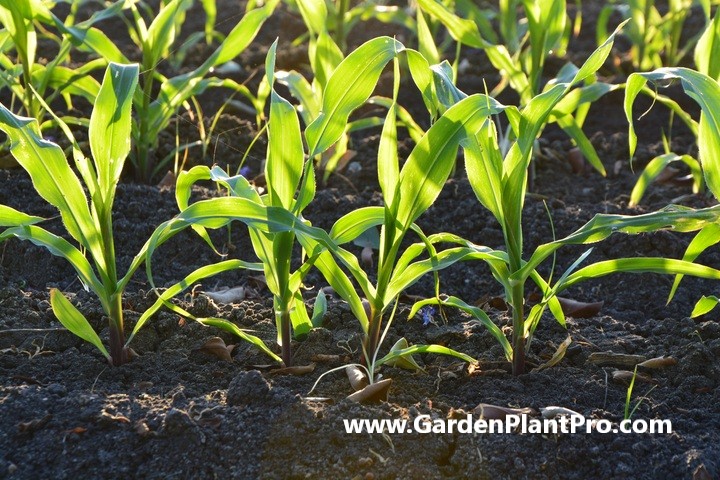
Common Varieties & Their Uses
When it comes to growing corn in your backyard, it is important to understand the different varieties and their uses. There are three main varieties of corn, early season, mid-season, and late-season. Early season varieties are the quickest to mature and are usually ready for harvest in about 70 days. Mid-season varieties take about 80 days to mature and late-season varieties may take the entire growing season.
Each variety has its own unique characteristics, so it is important to choose the right variety for your climate and soil type. For example, early season varieties do well in light soils such as sand or loam, while later season varieties prefer heavier soils such as silt or clay.
The type of corn you choose will also determine how it will be used. Early season varieties are generally used for fresh eating and canning, while mid-season varieties are better suited for processing into frozen corn or dried corn products such as popcorn or flour. Late-season varieties tend to have higher sugar content and can be used in sweet dishes like creamed corn or corn pudding.
When selecting a variety of corn for your garden, consider the maturity date and use for each variety. Make sure to read the seed packet for more detailed information about each variety before planting.
When To Sow
When it comes to sowing corn, the best time to do so depends on your climate. In warm temperate regions, corn will be planted in late winter to early spring. In cold temperate regions, corn should be planted in early spring. It is important to use fresh seed as viability decreases after a year.
Seeds should be sown 5cm deep, in rows 75cm apart, and two seeds per hole should be used with a spacing of 30-40cm between them. Germination can be erratic, so planting multiple seeds per hole helps ensure successful growth. When the seedlings reach 5-10cm, thin them out to 30cm apart.
By following these steps and choosing a warm, sunny spot in your garden, you can successfully grow healthy corn plants throughout the growing season.
Choosing A Suitable Location In The Garden
Choosing a suitable location for your corn is an important step in successful planting. The area should be in full sun, away from trees and other tall plants that could block the sun and shade the corn. It should also be well-draining and have access to plenty of water.
It’s also important to consider the wind while choosing a location. Corn is a tall plant and can easily be damaged by strong winds, so it’s best to avoid areas that are often windy.
When selecting a location, make sure there’s plenty of space between rows. Sweetcorn requires 3-6 feet between rows and 6-12 inches between individual plants. This will give each plant enough space to reach its full potential.
Once you’ve found an ideal spot, prepare your soil. Make sure it’s rich and fertile, with plenty of organic matter added to help retain moisture and provide nutrients for your corn plants. Once the soil is ready, you can move on to planting your seeds or seedlings.
Preparing The Soil
To prepare the soil for planting corn, it’s important to till it thoroughly and add organic matter such as well-rotted manure or compost. This will help improve the fertility and structure of the soil. The soil should be well-draining yet consistently moist, with an optimum pH range of 6.0 to 6.5. To ensure the best results, test the soil for its nutrient levels and adjust accordingly.
DIY PROJECT: Collect rainwater no matter where you live...
This DIY project is the best way to legally collect rainwater NO MATTER where you live. Get chlorine-free water, cut down on your water bills, and have enough for an emergency situation or to water your garden. Read More Here...
After tilling, use a rake to level the surface of the soil and remove any stones or debris that may be present. Once the soil is ready, you can start planting your corn seeds or seedlings.
Planting The Seeds Or Seedlings
Planting the seeds or seedlings for your corn is an important step in the process of growing your own crop. To ensure a successful harvest, it is important to follow the directions closely.
If you are growing from seed, sow sweetcorn seeds under glass or directly in rows once the soil has warmed up. To speed germination, moisten the seeds, wrap them in moist paper towels, and store them in a plastic bag for 24 hours. The seed must be fresh if it is to germinate.
For early plantings, sow the seeds only 1 inch deep; in the hot weather of midsummer, plant them up to 2 inches deep. As seeds can be finicky, it is a good idea to sow two seeds into each hole and space them 30-40 cm apart. To harvest sweet corn throughout the summer, plant a block approximately every two weeks. Check the seed packet to determine how long the corn will take to mature and plan accordingly.
If you are using seedlings instead of seeds, transplant them into individual holes that are twice as wide as the root ball and twice as deep as its height. Make sure to give each seedling plenty of space – around 75 cm between plants should do it. Water well after planting and keep soil moist throughout their growth period.
Caring For The Seedlings
Once the seeds have been planted and the seedlings are emerging, caring for them is a crucial part of successful corn growing. The seedlings require plenty of sunlight and consistent moisture while they are growing.
Water the plants regularly and evenly, ensuring that the soil remains moist without becoming soggy. You may need to mulch around the plants to help retain moisture and keep weeds at bay. To avoid overcrowding, thin out the seedlings if necessary, leaving a few inches between each plant.
It is important to fertilize your corn plants regularly throughout their growth cycle. Apply a balanced fertilizer containing nitrogen and other nutrients according to the instructions on the package.
Keep an eye out for any pests or diseases on your plants and treat them accordingly if they appear. Corn is also prone to lodging, where it topples over onto the ground due to heavy winds or too much rain. This can be prevented by staking your plants before they reach full height or using cages around each plant to give them extra support as they grow taller.
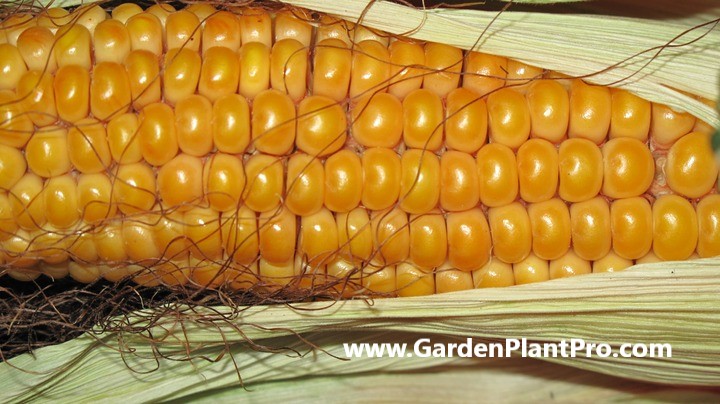
Watering & Fertilizing
Watering and fertilizing sweet corn plants is essential for their health and growth. It is important to water plants deeply, but not too frequently. When the soil is dry, give the plants a thorough soak to ensure they have enough moisture to grow. When the top few inches of soil has begun to dry, it’s time to water again. Be careful not to overwater as this can cause root rot or fungal diseases.
Fertilization is also important for sweet corn growth. You can use a standard compost or well-rotted manure, green manure, or a balanced fertilizer for sweet corn. Adding rock dust and chicken manure helps to provide essential nutrients for the plants. When applying fertilizer, be sure not to add too much as this can lead to leaf burn or other issues.
To reduce weeds in your sweet corn patch, mulch around your plants with hay, straw, grass clippings or other organic materials. This will help reduce weed competition and conserve moisture in the soil. Additionally, you should hill up the soil around your plants as they grow taller. This will help prevent waterlogging and also provide additional nutrients for the plant roots.
By following these steps and regularly watering and fertilizing your sweet corn plants, you can ensure they receive the nutrients they need to grow strong and healthy. With proper care and attention, you’ll be enjoying delicious homegrown sweet corn before you know it.
When & How To Harvest
When it comes to harvesting sweetcorn, timing is key. As the days get shorter and the nights get cooler, sweetcorn will start to mature. To check if the corn is ready to be harvested, peel back the husks and feel the kernels. They should be full, plump and juicy. The kernels should also be a yellow or golden color when ripe.
When harvesting sweetcorn, you should use sharp scissors or a knife to cut the husks off at the base of the plant. If there are any ears that are not fully mature, leave them on the stalk until they are ready to be harvested. Once picked, store sweetcorn in a cool, dry place and use as soon as possible for optimal flavor and freshness.
Storing
Storing is an important part of the corn-growing process. To store your freshly harvested corn for a longer period of time, it is important to act quickly. Corn can be stored in a number of ways, depending on the form and purpose of use.
If the corn is to be used in its fresh form, it should be kept cool and dry. It’s best to store it in the refrigerator or a cool, dry place out of direct sunlight. Corn will last for up to a week when kept this way.
Do you have some charcoal in your house right now? We call charcoal a “miracle leftover” for anyone who wants to be a little more self-sufficient and cut costs. That’s because it can help you with so many different things around the house and garden. You can even use it to make an energy-free fridge. Read More Here...
If you are planning on freezing your corn, blanch it first by boiling for four minutes and then submerging in cold water. Let it cool completely before transferring it to an airtight container or bag and freezing up to six months.
For long-term storage, it’s best to dry or can the corn. To dry corn, the ears should be husked and the kernels removed from the cob. Spread them out in a single layer on a tray and place in a warm, dry area with good airflow until completely dry (about three weeks). Once dried, transfer the kernels to an airtight container or bag and store away from light and moisture up to two years.
To can your corn, boil it first and then put the kernels into sterilized jars. Add 1 teaspoon of salt per pint jar before sealing with lids and rings. Process in a pressure canner for 45 minutes at 10 pounds pressure for pints and 11 pounds for quarts. Store canned corn away from light and moisture up to two years.
Common Diseases & How To Control Them
Sweet corn is susceptible to several diseases, so it’s important to check on your crop each day. Common diseases include rusts, corn smut, and other fungal diseases. Here are some tips for how to control them:
Rusts
Rusts are caused by a fungus that can spread quickly among plants. To prevent rusts, make sure to rotate your corn crop every year and always remove plant debris after harvest. If you notice yellow spots on the leaves of your plants, you may need to treat them with a fungicide.
Corn Smut
Corn smut is caused by a fungus that affects the kernels of the corn. To prevent it, make sure you keep your garden clean and free of debris from previous harvests. You can also treat plants with fungicides if needed.
Other Fungal Diseases
Other fungal diseases can be prevented by making sure your garden is well-drained and free of standing water. Ensure your soil has adequate organic matter, and keep weeds under control so they don’t compete for resources with the corn plants. If needed, you can treat plants with fungicides as well.
By taking these proactive steps and monitoring your crop daily, you should be able to prevent or reduce the spread of these common diseases in your garden.
Common Pests & How To Control Them
Common pests can ruin a corn crop if not managed properly. The most common pests of sweetcorn are cutworms, wireworms, corn earworms, and grasshoppers.
Cutworms
Cutworms are active during the night and can damage seedlings by cutting off the shoot at the soil line. To prevent cutworm damage, you should use collars made of paper or cardboard to protect young seedlings by placing them around the stem of each plant.
Wireworms
Wireworms are larvae of click beetles and feed on germinating corn seeds, as well as other underground parts of the plants such as roots and crowns. To combat wireworms, you should rotate crops, till the soil in autumn to disturb larvae, and apply beneficial nematodes.
Corn Earworms
Corn earworms are caterpillars that feed on the immature ears of sweetcorn. The best way to fight corn earworms is by introducing natural predators such as birds or beneficial insects into the garden.
Grasshoppers
Grasshoppers can also be a problem in some areas of the United States. To control grasshopper populations, you should plant grasshopper-resistant corn varieties and use insecticides if necessary.
These are just some of the common pests that can affect sweetcorn plants. By understanding these pests you can have a successful sweetcorn harvest each season.
Beneficial Companion Plants
Once you have chosen a suitable location in the garden and prepared the soil, it is important to consider which companion plants you will grow alongside your corn. Companion planting can help to improve crop yield, attract beneficial insects and deter pests. Planting certain companion plants alongside your corn can also add flavor to your dishes or aid in nutrient uptake.
Borage is a great companion plant for corn, as it helps to attract beneficial insects and deters pests. Borage can also be planted alongside tomatoes, cabbage, squashes, beans, cucumbers and strawberries for an added flavor boost or improved nutrition for the vegetables. Basil is another beneficial companion for corn as it deters pests and helps to improve growth.
Other beneficial companion plants for corn include cucumbers, which consume only a small amount of nutrients and do not compete with your corn plants. Marigolds are also a great choice as they release natural insecticides that can ward off harmful pests. Radish is another excellent companion plant as it helps to add flavor to dishes made with corn while also repelling certain insects.
CASE STUDY: We've been living off the grid for the last 40 years...
In all that time an electric wire has never been connected to our house. We haven’t gotten or paid an electricity bill in over 40 years, but we have all the electricity we want. We grow everything we need, here, in our small backyard. We also have a small medicinal garden for tough times. Read More Here...
When planting your companion plants alongside your corn, remember to tuck in a little here and squeeze in a few plants there. This allows each plant enough room to grow without overcrowding the garden bed. Proper spacing will also ensure that each plant gets equal access to sunlight, water and nutrients.
To ensure maximum benefits from companion planting, take the time to research which plants will work best in your garden before sowing your seeds or seedlings. This way, you can get the most out of each harvest season while also providing your corn with the best possible environment for optimal growth and productivity.
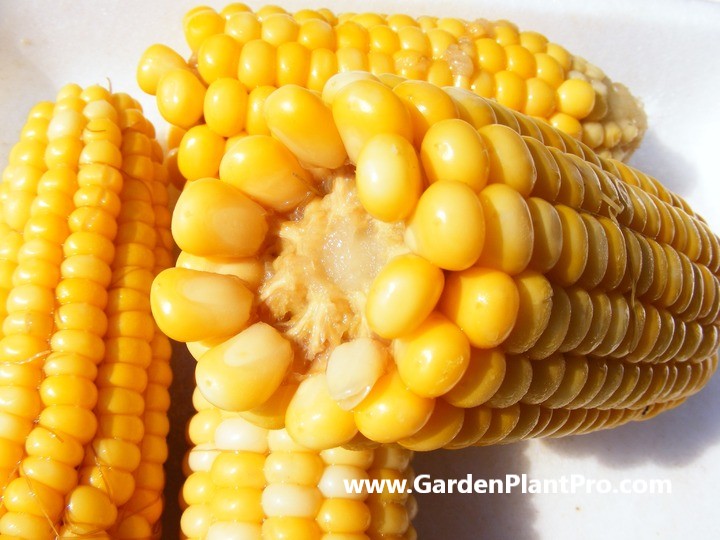
Using Corn In Your Cooking
Cooking with corn is a great way to add flavor and variety to your meals. Whether you’re using fresh, canned or frozen corn, the possibilities are endless. Here’s a guide on how to use corn in your cooking.
Fresh Corn: When using fresh corn, it’s best to select ears that are bright green and have tight husks. To prepare the ears for cooking, pull the husks back, remove the silk and discard the husks. Give the ears a good rinse and then pat dry with a paper towel before cooking. Fresh corn can be boiled, steamed, grilled or roasted in the oven. As an alternative, you can also soak the ears in cold water for an hour before grilling to make them easier to handle.
Canned Corn: Canned corn is already cooked and ready to eat so it’s great if you’re short on time. To use canned corn, drain off any liquid and rinse with cold water before adding it to your recipe. Canned corn is great for making soups, stews and casseroles or simply as a side dish.
Frozen Corn: Frozen corn is a great way to add flavor and texture without having to go through the hassle of cooking fresh corn. To use frozen corn, simply defrost in the refrigerator or microwave and season as desired. Frozen corn is perfect for adding to stir-fries, salads or tacos for an extra burst of flavor.
No matter what type of corn you choose, it’s sure to add some delicious flavor to your dishes!


